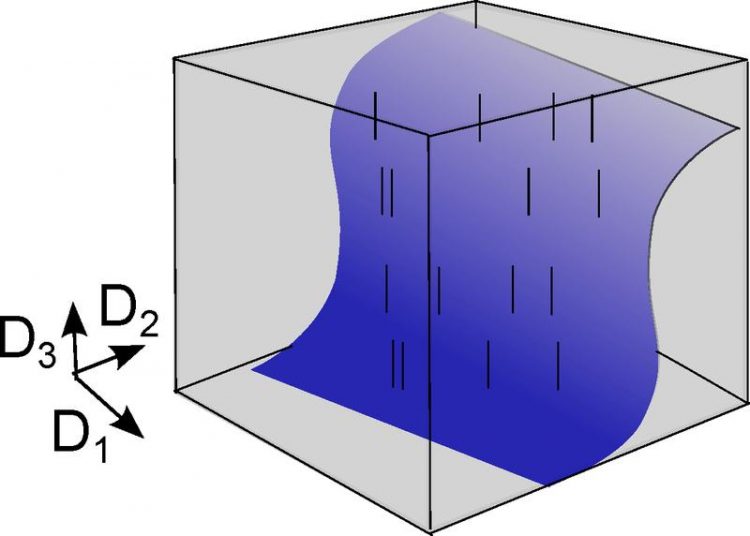How much information can we get from a spike?

In many situations it is sufficient to consider the space of pairwise spike correlations (blue) to understand neural information, without the need to evaluate all possible spike combinations (gray). Tatjana Tchumatchenko / Max Planck Institute for Brain Research
Recent work at the Max Planck Institute for Brain Research (Theory of Neural Dynamics Group) reveals that by determining temporal pairwise correlations one can get closer to answering this question.
A key to understanding how the brain works is revealing the set of rules neurons use to communicate information between one another. The main means of neural communication are spikes, which are brief electrical pulses send out at some specific times.
A spike train generated by a neuron can be considered a long binary pattern where “1” denotes a spike and “0” its absence. How much information about the input can be recovered by observing spike trains which look for example like 00010100…?
How many combinations of 0’s and 1’s should be studied to “decode” the input message of a neuron? Especially the latter question is not trivial because nearly infinitely many combinations of 0’s and 1’s are possible.
Tatjana Tchumatchenko and her team now present a theoretical approach showing that only a limited number of binary patters is required and that correlations between pairs of spikes (between the time points of two “1”s) are key to solve the code in single neurons.
Their findings have been published in Nature Communications.
http://brain.mpg.de/news-events/news/news/archive/2017/march/article/how-much-in…
Media Contact
All latest news from the category: Life Sciences and Chemistry
Articles and reports from the Life Sciences and chemistry area deal with applied and basic research into modern biology, chemistry and human medicine.
Valuable information can be found on a range of life sciences fields including bacteriology, biochemistry, bionics, bioinformatics, biophysics, biotechnology, genetics, geobotany, human biology, marine biology, microbiology, molecular biology, cellular biology, zoology, bioinorganic chemistry, microchemistry and environmental chemistry.
Newest articles

Zap Energy achieves 37-million-degree temperatures in a compact device
New publication reports record electron temperatures for a small-scale, sheared-flow-stabilized Z-pinch fusion device. In the nine decades since humans first produced fusion reactions, only a few fusion technologies have demonstrated…

Innovative microscopy demystifies metabolism of Alzheimer’s
Researchers at UC San Diego have deployed state-of-the art imaging techniques to discover the metabolism driving Alzheimer’s disease; results suggest new treatment strategies. Alzheimer’s disease causes significant problems with memory,…

A cause of immunodeficiency identified
After stroke and heart attack: Every year, between 250,000 and 300,000 people in Germany suffer from a stroke or heart attack. These patients suffer immune disturbances and are very frequently…





















